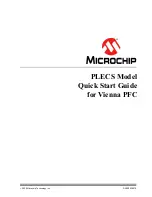DR
AFT
DR
AFT
DRAFT
DR
D
RAFT
DRAFT
DRA
FT DRAF
D
RAFT DRAFT DRAFT DRAFT DRAFT D
DRAFT
D
RAFT DRA
FT DRAFT DRAFT DRAFT DRA
UM10316_0
© NXP B.V. 2008. All rights reserved.
User manual
Rev. 00.06 — 17 December 2008
320 of 571
NXP Semiconductors
UM10316
Chapter 21: LPC29xx CAN 0/1
[2]
It is possible to select more than one message buffer for transmission. If more than one buffer is selected
(TR = 1 or SRR = 1) the internal transmit-message queue is organized so that, depending on the transmit-
priority mode TPM, the transmit buffer with the lowest CAN identifier (ID) or the lowest 'local priority'
(TXPRIO) wins the prioritization and is sent first.
[3]
Setting the command bits TR and AT simultaneously results in transmitting a message once. No
retransmission will be performed in the case of an error or lost arbitration (single-shot transmission). Setting
the command bits SRR and AT simultaneously results in sending the transmit message once using the
self-reception feature. No retransmission will be performed in the case of an error or lost arbitration. Setting
the command bits TR, AT and SRR simultaneously results in transmitting a message once as described for
TR and AT. Immediately the transmit status bit is set within the status register the internal transmission
request bit is automatically cleared. Setting TR and SRR simultaneously will ignore the set SRR bit.
[4]
After reading the contents of the receive buffer the CPU can release this memory space by setting the
RRB bit to 1. This may result in another message becoming immediately available. If there is no other
message available the receive-interrupt bit is reset. If the RRB command is given it will take at least two
internal clock cycles before a new interrupt is generated.
[5]
The AT bit is used when the CPU requires suspension of the previously requested transmission; e.g. to
transmit a more urgent message first. A transmission already in progress is not stopped. To see if the
original message has been either transmitted successfully or aborted, the transmission-complete status bit
should be checked. This should be done after the transmit buffer-status bit has been set to 1or a transmit
interrupt has been generated.
[6]
If the TR or the SRR bits were set to 1 in a previous command, this cannot be cancelled by resetting the
bits. The requested transmission can only be cancelled by setting the AT bit.
9.3 CAN controller global status register
The CAN controller global status register reflects the global status of the CAN controller
including the transmit and receive error counter values.
shows the bit assignment of the CCGS register.
Table 269. CCGS register bit description (CCGS, address 0xE008 0008 (CAN0) and 0xE008
1008 (CAN1))
* = reset value; **both reset value and soft reset mode value
Bit
Symbol
Access
Value
Description
31 to 24 TXERR[7:0]
R/W
Transmit error counter. This register reflects the
current value of the transmit error counter. It is
only writable in soft reset mode. If a bus-off
event occurs the transmit error counter is
initialized to 127 to count the minimum
protocol-defined time (128 occurrences of the
bus-free signal). Reading the transmit error
counter during this time gives information about
the status of the bus-off recovery. If bus-off is
active a write-access to the transmit error
counter in the range 0 to 254 clears the bus-off
flag, and the controller waits for one occurrence
of 11 consecutive recessive bits (bus-free) after
clearing the soft reset mode bit
00h*
23 to 16 RXERR[7:0]
R/W
Receive error counter.This register reflects the
current value of the receive error counter and is
only writable in soft reset mode. If a bus-off
event occurs the receive error counter is
initialized to 00h. As long as the bus-off
condition is valid writing to this register has no
effect
00h*


















